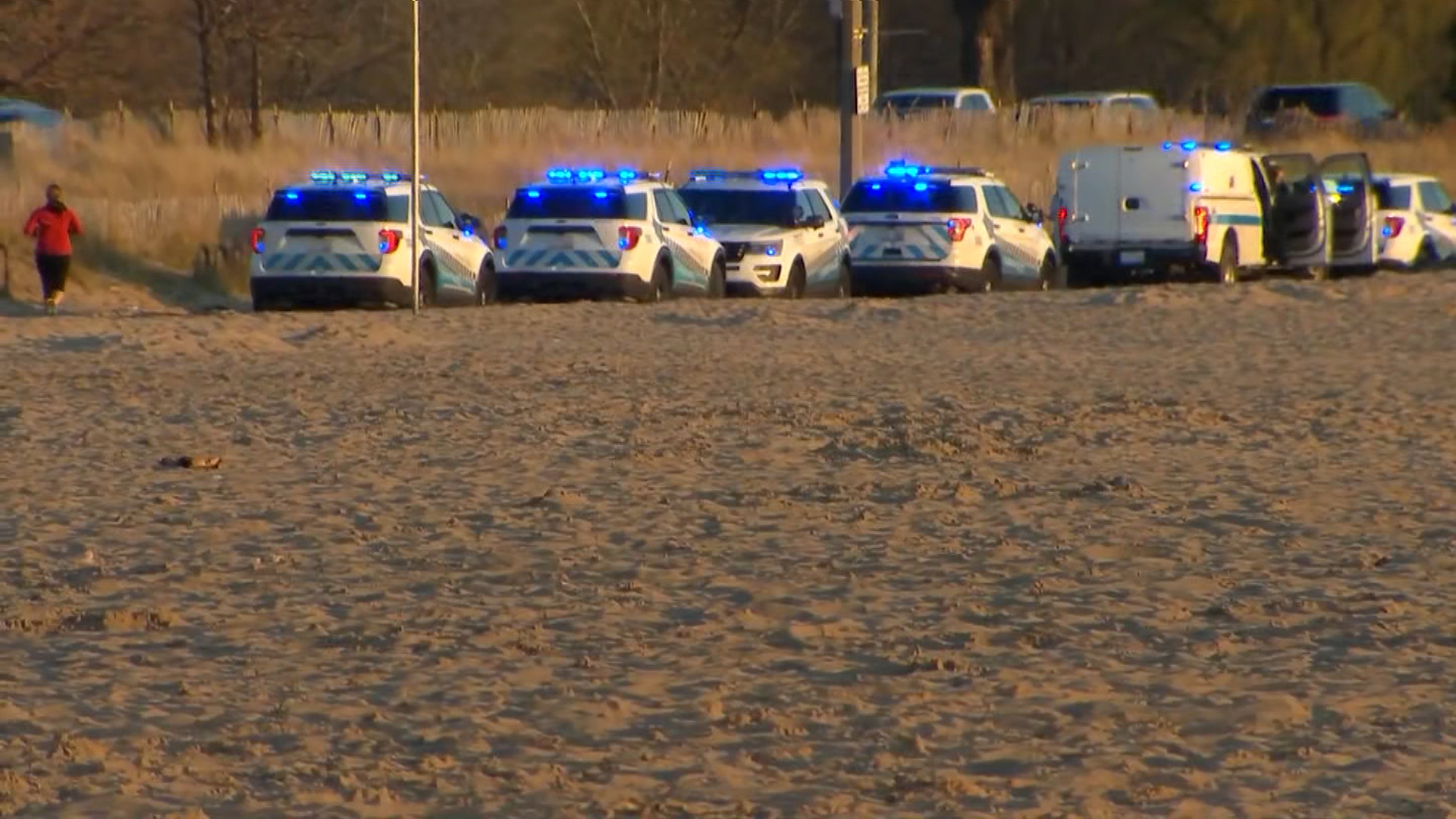Smoke and hazy conditions are descending on several parts of the U.S., including in Chicago, lately as intense Canadian wildfires spark warnings for many.
But where is it all coming from exactly and how dangerous is it?
Here's a look at what we know so far:
Where are the wildfires burning?
Feeling out of the loop? We'll catch you up on the Chicago news you need to know. Sign up for the weekly Chicago Catch-Up newsletter here.
Hundreds of wildfires are burning across western provinces to Quebec.
The Quebec-area fires are big and relatively close, about 500 to 600 miles (roughly 800 to 970 kilometers) away from Rhode Island and close to 1,000 miles from Chicago. And they followed wildfires in Nova Scotia, which resulted in a short-lived air quality alert on May 30.
Where is the smoke hitting the US?
Local
The wildfires are blanketing the northeastern U.S. and parts of the Midwest in a dystopian haze, turning the air acrid, the sky yellowish gray and prompting warnings for vulnerable populations to stay inside.
Hazy conditions and smoke from the wildfires were reported across the Great Lakes region from Cleveland to Buffalo.
A smoky haze that hung over New York City much of the day Tuesday thickened in the late afternoon, obscuring views of New Jersey across the Hudson River and making the setting sun look like a reddish orb. In the Philadelphia area, dusk brought more of a lavender haze.
In the Chicago area, high ozone levels, combined with smoke from wildfires led to air quality alerts and hazy skies Monday. By Wednesday, the smoke across the city and the suburbs had reduced from a thick to a moderate level.
But across the east coast, the thick smoke remained. Images posted to social media Wednesday showed heavy smoke blanketing Yankee Stadium in Bronx, where the White Sox are scheduled to play in the evening.
What's happening in the Chicago area?
According to the National Weather Service, air quality levels in the Chicago area have fluctuated due to the wildfires.
"It has been due to a combination of ground-level ozone and particulate matter/smoke, though this has varied from day to day," the NWS said in a tweet.
As of 1 p.m. Wednesday an "air quality action day" was issued for parts of northwest Indiana, citing "elevated ozone levels." The alert remains in effect for Lake, Porter, Newton and Jasper counties until midnight Thursday.
"Ozone Levels are expected to be at unhealthy levels for sensitive groups," the alert states.
Earlier this week, officials urged anyone with chronic respiratory illnesses to limit their time outdoors.
How dangerous is it?
The U.S. Environmental Protection Agency said hazy skies, reduced visibility and the odor of burning wood are likely, and that the smoke will linger for a few days in northern states.
“It's not unusual for us to get fire smoke in our area. It's very typical in terms of northwest Canada,” said Darren Austin, a meteorologist and senior air quality specialist with the Rhode Island Department of Environmental Management. But, usually, the smoke has been aloft and hasn't affected people's health, he said.
Air quality alerts are triggered by a number of factors, including the detection of fine-particle pollution — known as “PM 2.5” — which can irritate the lungs.
“We have defenses in our upper airway to trap larger particles and prevent them from getting down into the lungs. These are sort of the right size to get past those defenses,” said Dr. David Hill, a pulmonologist in Waterbury, Connecticut, and a member of the American Lung Association's National Board of Directors. “When those particles get down into the respiratory space, they cause the body to have an inflammatory reaction to them.”
Trent Ford, the state climatologist in Illinois, said the atmospheric conditions in the upper Midwest creating dry, warm weather made it possible for small particulates to travel hundreds of miles from the Canadian wildfires and linger for days.
“It’s a good example of how complex the climate system is but also how connected it is,” Ford said.
Exposure to elevated fine particle pollution levels can affect the lungs and heart.
The air quality alerts caution “sensitive groups,” a big category that includes children, older adults, and people with lung diseases, such as asthma and chronic obstructive pulmonary disease.
Kids, who often are encouraged to go out and play, “are more susceptible to smoke for a number of reasons,” said Laura Kate Bender, the lung association's National Assistant Vice President, healthy air. “Their lungs are still developing, they breathe in more air per unit of body weight.”
What is an air quality alert?
Air quality is monitored using a number of factors, which determine an "air quality index" that the Environmental Protection Agency then uses.
"The higher the AQI value, the greater the level of air pollution and the greater the health concern," according to AirNow, where the index is reported. "For example, an AQI value of 50 or below represents good air quality, while an AQI value over 300 represents hazardous air quality."
Values above 100 are considered unhealthy, particularly for sensitive groups of people. But as the levels rise, so does the risk.
You can check the air quality levels for your area using this online interactive map.
Here are the guidelines:
| Daily AQI Color | Levels of Concern | Values of Index | Description of Air Quality |
|---|---|---|---|
| Green | Good | 0 to 50 | Air quality is satisfactory, and air pollution poses little or no risk. |
| Yellow | Moderate | 51 to 100 | Air quality is acceptable. However, there may be a risk for some people, particularly those who are unusually sensitive to air pollution. |
| Orange | Unhealthy for Sensitive Groups | 101 to 150 | Members of sensitive groups may experience health effects. The general public is less likely to be affected. |
| Red | Unhealthy | 151 to 200 | Some members of the general public may experience health effects; members of sensitive groups may experience more serious health effects. |
| Purple | Very Unhealthy | 201 to 300 | Health alert: The risk of health effects is increased for everyone. |
| Maroon | Hazardous | 301 and higher | Health warning of emergency conditions: everyone is more likely to be affected. |
How long could the smoke last?
Jay Engle, a National Weather Service meteorologist based in Upton, Long Island, said the wind trajectory that allowed smoke and hazy conditions to be seen in the New York City area could continue for the next few days. Of course, he said, the main driver of conditions is the fires themselves. If they diminish, the haze would too.
What can you do for now?
Here's how you can protect your health from the smoky haze:
STAY INDOORS
The small particles in wildfire smoke can irritate the eyes, nose and throat, and can affect the heart and lungs, making it harder to breathe. It’s important to limit outdoor activities as much as possible to avoid breathing in these particles, health agencies say. You should especially avoid strenuous activities like going for a run, since heavy breathing will increase the amount of smoke you inhale. And bring pets inside too: Animals are also affected by smoky conditions.
KEEP INSIDE AIR CLEAN
When inside, keep doors, windows and fireplaces shut so that smoke stays out. If you have a portable air purifier or HVAC system, run it to help keep the air clean, the Environmental Protection Agency recommends. Check that your filters are high quality and up to date. Make sure any filters or air conditioners are set to recirculate indoor air to avoid bringing in smoke from outside. If you have a window air conditioner, check that it's sealed to the window as tightly as possible. And try to avoid activities that would add more particles to the air in your home — like smoking, burning candles or frying meat.
WEAR A MASK
If you go outside in smoky conditions, consider wearing a mask, like an N95, to protect your lungs. The mask should fit over your nose and under your chin, and seal tightly to your face to keep out the smoky air.
KNOW YOUR RISK
Some groups should be extra careful as they face higher risks from wildfire smoke. Children and older adults are especially sensitive to smoky conditions. Those with health conditions affecting the lungs or heart — like asthma or chronic obstructive pulmonary disease — face higher risks from poor air quality, along with those who are pregnant, according to the Centers for Disease Control and Prevention. People in these groups should take extra precautions and monitor for symptoms like coughing, trouble breathing or fatigue.



